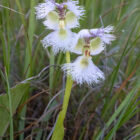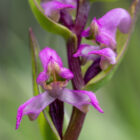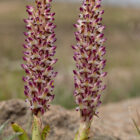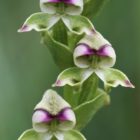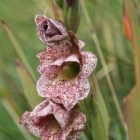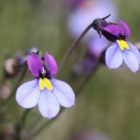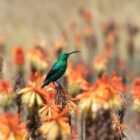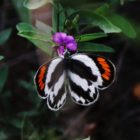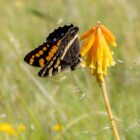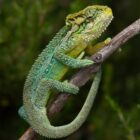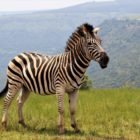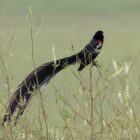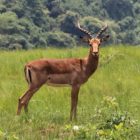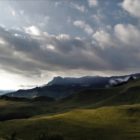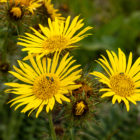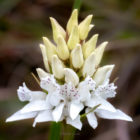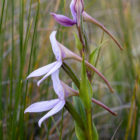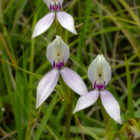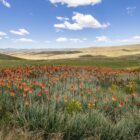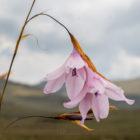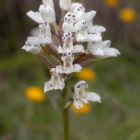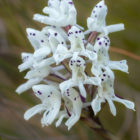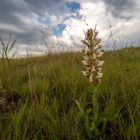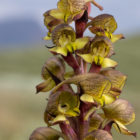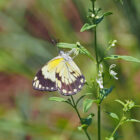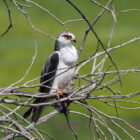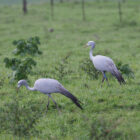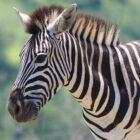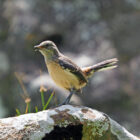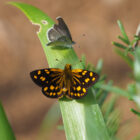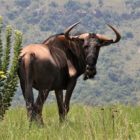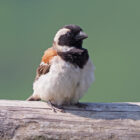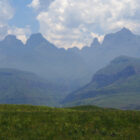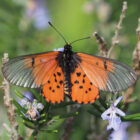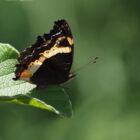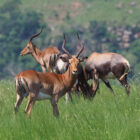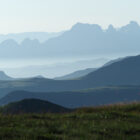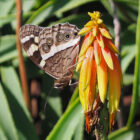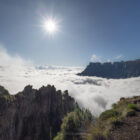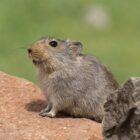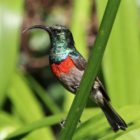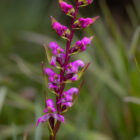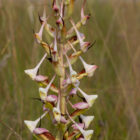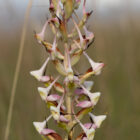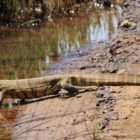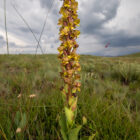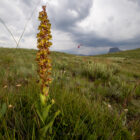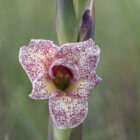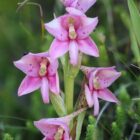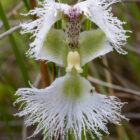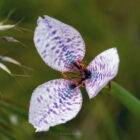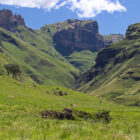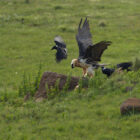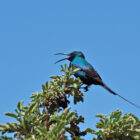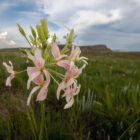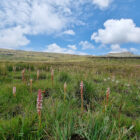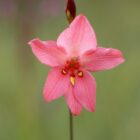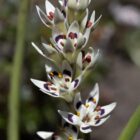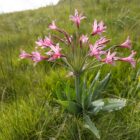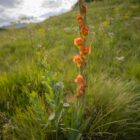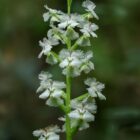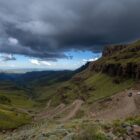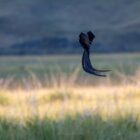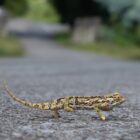Dates & Prices |
BOOK NOW |
Dates: 18th January – 1st February 2025 Confirmed departure
Price: £3,995 1 place
Single Room Supplement: £395
Deposit: £400 per person
Price Includes: All meals, accommodation with private facilities, ground transport, services of the guides, holiday report & a donation to a wildlife charity
Not Included: Flights, travel insurance, drinks and any other personal items
Conservation Donation: 10% of profits donated to BSBI
Leaders: Frank Gaude + second guide for a larger group
Languages: Guiding in English (German also spoken by guide)
Group Size: Minimum of 3 and a maximum of 9 guests plus 1-2 leaders
Holiday Highlights
- One of the largest alpine zones in South Africa & we’ll visit to take advantage of peak summer flowering
- A veritable treasure trove of flowers with over 2000 species and several hundred endemics!
- Many different habitats visited including Afromontane forests and high-altitude Austro-Afro Alpine grasslands
- Visit world famous landscapes and locations such as the Sani Pass, Cathedral Peak, Sentinel, and the Golden Gate National Park
- Endemic plants, including Agapanthus, Gladiolus, Dierama, Helichrysum, Erica and Proteas. Plus orchids such as Disperis, Disa and Satyrium
- Drakensberg Crag Lizard, Southern Rock Agama and other extraordinary lizards
- Sloggett’s ice rats, hyrax, antelope and zebra
- Plenty of good birds, such as the Drakensberg Rockjumper, Grey-crowned Cranes, Southern Bald Ibis, Malachite and Greater Double-collared Sunbirds plus lots more!
- Butterflies, such as the endemic Bush Beauty
The Drakensberg Mountains feature the largest areas of alpine zone in Africa, with world-famous scenery such as the Sani Pass and Golden Gate National Park. It is a sublime mix of rugged peaks, scarps, pinnacles, forest, waterfalls and rivers. Because of its range of plant life and the richest collection of San rock paintings in Africa, it has been declared a World Heritage Site. And it isn’t just great for flowers, there is plenty of other wildlife interest, including Bearded Vultures, Drakensberg Rock-jumpers and the stunning Bush Beauty butterfly! The Drakensberg, also known as the “Dragon Mountains,” is southern Africa’s most impressive mountain range and one of the world’s oldest centres of plant endemism. They are the best known part of The Great Escarpment, a major topographical feature in Africa that consists of steep slopes from the high central Southern African plateau downward in the direction of the oceans. About 180 million years ago, a mantle plume under southern Gondwana caused bulging of the continental crust in the area that would later become southern Africa. The upliftment of the central plateau over the past 20 million years caused the original escarpment to be moved inland through erosion to its present position, creating the present-day coastal plain. The Drakensberg escarpment stretches for over 1,000 kilometres from the Eastern Cape Province in the South, then successively forms, in order from south to north, the border between Lesotho and the Eastern Cape and the border between Lesotho and KwaZulu-Natal Province. The Drakensberg landscape is both dramatic and rich in flora and fauna. The high treeless peaks of the Drakensberg (from 2,500 m upwards) are known as the Drakensberg alti-montane grasslands and woodlands eco region. These steep slopes are the most southerly high mountains in Africa. Plants from all families are found here including Agapanthus, Brunsvigi, Nerine, Zantedeschia, Bulbine, Kniphofia, Eucomis, Crocosmia, Gladiolus and Moraea for which South Africa is the centre of endemism. We also hope to see many terrestrial orchids such as Disa, Disperis and Habernaria species. The area is rich in members of the Asclepiadaceae and the Asteraceae families such as Berkheya, Helichrysum and Senecio with many species in these genera. Wahlenbergiais a member of the Campanulaceae and we should see this. Scrophulariaceae are well represented with several genera. Whilst we shall focus on plants on our travels, we shall not ignore the rich fauna especially the butterflies and other insects, reptiles (especially chameleons), birds and the larger mammals. We shall make the pace as slow as possible so as to make the best of each area we visit. Weather: It is mid-summer in the Drakensberg and a wide range of temperatures can be expected. It can be hot at lower altitudes (up to 30C), but most of our time will be at medium to high altitudes where it will be milder and often cold in the evenings. At higher altitudes, it is often warm in the direct sun but otherwise cool if there is a breeze. We can expect some rain, most of which falls in very dramatic late afternoon and night thunderstorms. Passport requirements: Please ensure you have at least 2 – 3 blank pages in your passport as you will be denied entry to South Africa unless you have 1 blank page, and you need space for the visit to Lesotho. UK passport holders do not need a visa to enter South Africa or Lesotho but if you are traveling on the passport of another country then please check the requirements Health and fitness: The highest altitude we will reach on this tour is between 2,500 – 3,000m above sea level. There is only one day where we exceed 2,500m. You will need to be reasonably fit to derive maximum enjoyment from this tour. However, much of the flora can be found close to the roadsides and if you are comfortable to sometimes remain at the vehicles or lodgings while we do some of the longer walks then that should be possible. Languages: The guides are native and/or fluent speakers in English and German. This promises to be a fantastic and very popular tour – we recommend booking early to avoid disappointment!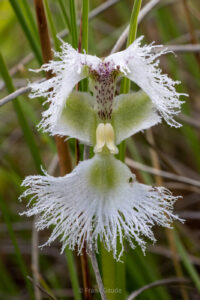
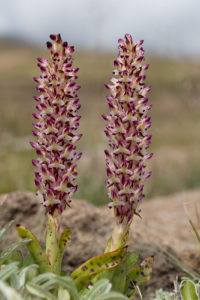
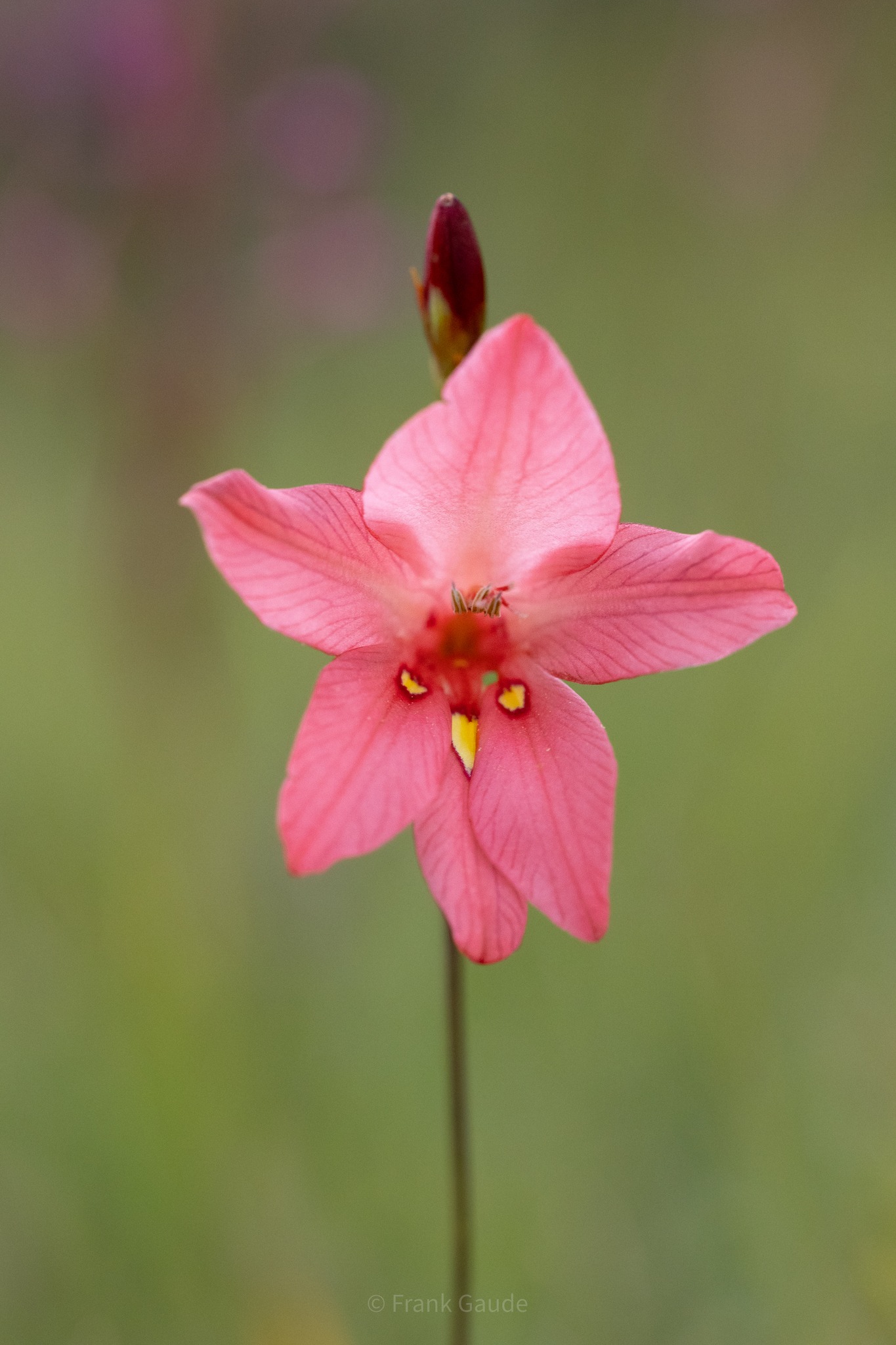

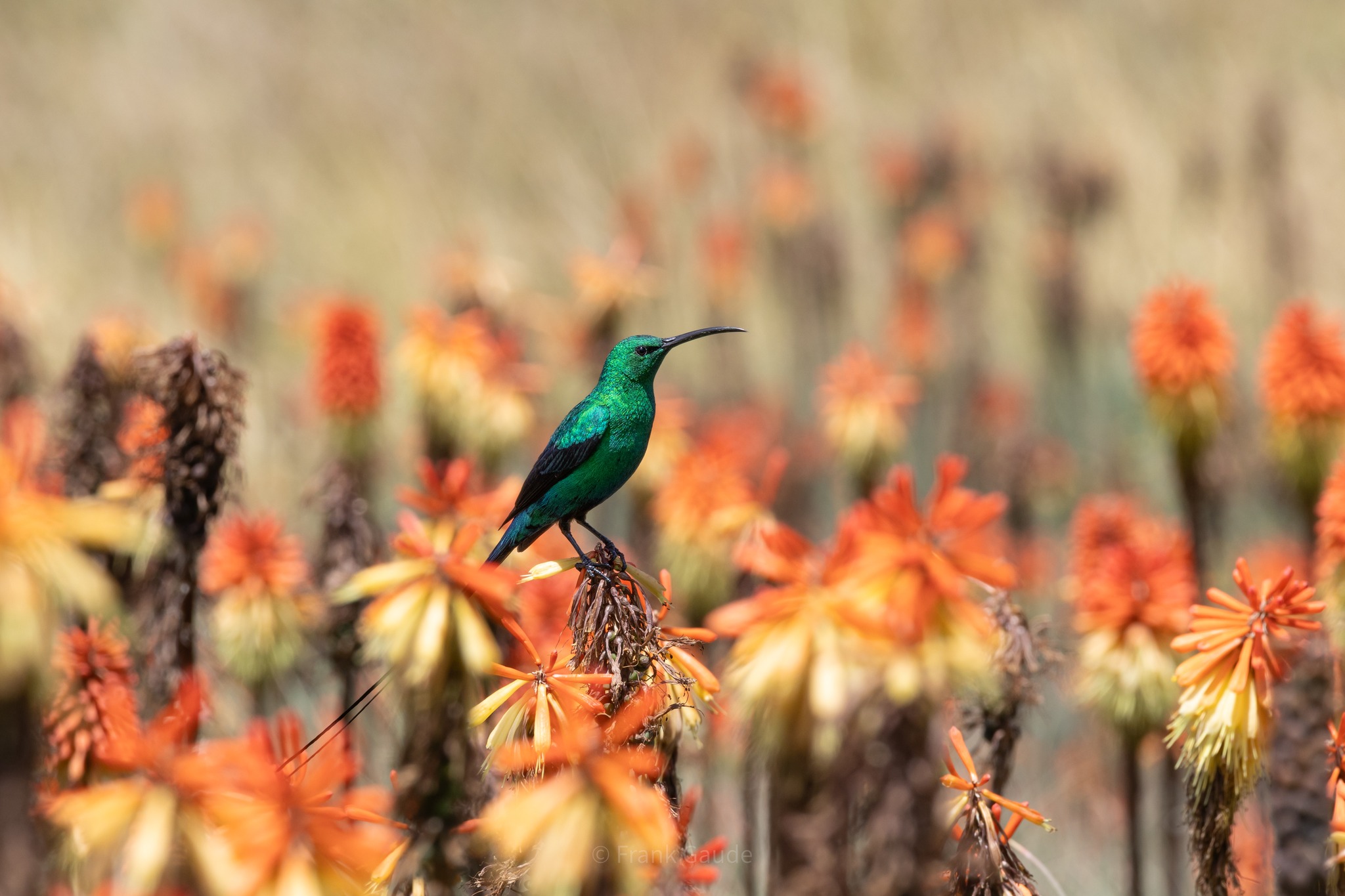
Day 1 (18th January). Departure & international flights from London (or other location)
Day 2 (19th January). Arrival at Durban, King Shaka International We drive from the airport to Port Edward. The distance is about 200 km and it will take us about three hours driving time to arrive at our accommodation place for check-in.We will stop on-route for lunch and possibly our first exploration of the country side, time permitting.
Day 3 (20th January). Today we shall explore the Umtamvuna Nature Reserve, which lies a short distance from Port Edward. The reserve includes a section of the Mtamvuna River and surrounding cliffs and plateaus. The plateau areas consist of grasslands (Pondoland Sourveld). Many endemic plants grow here. The grassland areas of the reserve are also known for their natural display of wildflowers in late spring and summer. The forest is the only or principal home of a host of rare trees such as the magnificent Natal Flame Bush (Alberta magna). We hope to see South Africa’s tallest orchid, Eulophia horsfallii and other orchid species such as Habenaria dives, Eulophia ensata, Satyrium trinerve and Satyrium longicauda.
Other plants of interest that we will look out for are Agapanthus praecox, Brunsvigia grandiflora, the Natal Cycad Encephelartos natalensis, Bulbine abyssinica and Bulbine latifolia, Aloe arborescens and the strange Asclepiad Pachycarpus grandiflorus. Gaudy Commodore Butterflies are common here.
Birds to be seen include Yellow-billed Kite, Jackal Buzzard, Croaking Cisticola, Fan-tailed Widowbird, Red-winged Francolin and White-necked Ravens. Overnight in Port Edward.
Day 4 (21st January). This is a transfer day from Port Edward to our accommodation in the Southern Drakensberg. We will cover approximately 300 kms, which will mean about 4 hours of driving. Before we start the journey, we make an early morning excursion to Mpenjati Nature Reserve close to Port Edward where we hope to see the impressive yellow orchid Eulophia angolensis, maybe Eulophia speciosa and certainly the beautiful Flame Lily Gloriosa superba. We will walk through interesting Dune Forest and see Aloe thraskii, the dune-stabilising Scaevola plumieri and Strelitzia nicolai, the Natal Wild Banana.
Along the road on route to Sani Lodge Backpackers we hope to spot the orchids Brachycorythis ovata and Satyrium cristatum and hopefully the beautiful Gladiolus dalenii. Once we have reached our destination at Sani Lodge Backpackers, we will take a little stroll to look for the orchids Disa versicolor, Disa stachyoides and Eulophia zeyheriana. For the next three nights we will stay at Sani Lodge Backpackers outside the village of Himeville next to Cobham Nature Reserve.
Day 5 (22nd January). Today we explore the part ‘Garden Castle’ of the World Heritage Site Ukhahlamba Drakensberg Park. After good summer rains, this area is rich in flowering orchids such as Corycium dracomontanum, Disa stachyoides, Disperis concinna, Eulophia hians, Habenaria laevigata, Habenaria dives, Satyrium longicauda and Satyrium neglectum. Other interesting plants include Agapanthus, Crassula vaginata, Cyphia tysonii, Dierama dracomontanum, the beautiful Gladiolus ecklonii, Pelargonium luridum, Protea dracomontanum, Zaluzianskya microsiphon to mention a few.With a bit of luck we may spot Chacma Baboon and Eland. Overnight Sani Lodge Backpackers.
Day 6 (23rd January). Today we change into 4×4 vehicles and will climb the Sani Pass, crossing the border to Lesotho. We expect to see the orchids Disa cephalotes and several Satyrium species such as longicauda, parviflorum and neglectum. Amongst the bulbous plants we hope to find ‘Drakensberg Hairbells’ Dierama dracomontanum, the ‘Suicide Gladiolus’ Gladiolus flanagannii, Moraea alticola, Rhodohypoxis baurii, and the ‘Christmas Bells’ Sandersonia aurantiaca.
Amongst the interesting shrubs are Euryops acraeus, Protea dracomontanum, roupelliae and subvestita, Psoralea rhizomata and several species of Lotononis.
Birds to be seen here include Mountain Wheatear, Red-winged Starling, Drakensberg Siskin, Drakensberg Rock Jumper and Gurney’s Sugarbird. Sloggett’s Icerat’s the equivalent of the Alpine Marmots, are at home as well as the Drakensberg Crag Lizard and Southern Rock Agama. Overnight at Sani Lodge Backpackers.
Day 7 (24th January). From Sani Lodge Backpackers we drive northwards to our next accommodation, a guest farm, near Bergville. This is a fairly long drive leading through a very beautiful and varied landscape. Since we are likely to see a lot on route, this transfer will probably take most of the day with lots of exciting sightings of plants and birds.
Possible birds along the way are Amur Falcon, Fiscal Shrike, Jackal Buzzard Long-tailed Widowbird, Sacred Ibis and Secretary Bird. Larger mammals of the area include Baboon, Blesbok, Eland and Reedbuck. Overnight at Dalmore Guest Farm.
Day 8 (25th January). Today we make an excursion to the protected area around Cathedral Peak. Apart from the imposing landscape dominated by the towering Cathedral Peak, we will explore the grasslands in the reserve with its various plants. Typical for the area is the Mountain Cabbage Tree (Cussonia paniculata), amongst the taller shrubs are Protea roupelliae and Searsia discolor. We will look for Artemisia afra, Crocosmia paniculata, Geranium wakkerstroomianum, Gloriosa modesta, Satyrium cristatum, Wahlenbergia krebsii and hopefully many more. Overnight at Dalmore Guest Farm
Day 9 (26th January). The Drakensberg’s most famous vista, the Amphitheatre in the Royal Natal National Park forms part of today’s program.
We leave Dalmore in the morning and drive for about 70 km / 1 ½ hours to The Royal Natal National Park where we will be botanising and on the watch for butterflies, birds, mammals and other animals. We shall explore the grasslands and forest areas for Agapanthus, Aloe aristata, Begonia sutherlandii, Carissa bispinosa, Diospyros whyteana, Gladioli, Hesperantha coccinea, Monsonia attenuatum and Schizoglossum atropurpureum. Furthermore, the orchids Liparis bowkeri, Disperis fanniniae and Habenaria malacophylla and the ferns Pteris cretica and Adiantum poiretii.
After our visit to the Royal Natal National Park we carry on with our journey to Witsieshoek Mountain Lodge, located in the Eastern Free State, where we will stay the following four night. We will reach Witsieshoek after another 220 km / 3 hour drive.
Day 10 (27th January). The area around Witsieshoek is one of the richest alpine areas in the Drakensberg. From Witsieshoek Mountain Lodge we will walk along a gentle mountain path and take in as much of the grand landscape with its abundance of flowering plants. Some of the orchids we see will be old acquaintances, like Satyrium parviflorum and neglectum. Other species are Corycium nigrescens, Disperic wealii, Disperis cardiophora, Disperis concinna and Pterygodium magnum.
Some of the bulbs are Galtonia candicans, Gladiolus crassifolius, Gladiolus ecklonis, Gladiolus microcarpus, the Pineapple Flowers Eucomis autumnalis and Eucomis bicolor and others. Sometimes it is possible to see Bearded Vultures in the vicinity of the lodge. Overnight at Witsieshoek Mountain Lodge.
Day 11 (28th January). Today we shall drive higher in 4×4 cars and then walk on to views of the Sentinel. Orchids to be seen are Disa fragrans, Disa versicolor, Disperis fanniniae, Disperis stenoplectron, Habenaria sp, Pterygodium hastatum, Schizochilus angustifolius. Other exciting plants are several Kniphofia species (porphyrantha, ritualis and fibrosa) Agapanthus sp and Nerine bowdenii. Overnight at Witsieshoek Mountain Lodge.
Day 12 (29th January). We visit the Golden Gate National Park, about an hour’s drive from our Lodge. Here we will make use of the roads within the national park and drive the two available circular routes, Oribi and Blesbok Loop. Here we hope to see some game such as Black Wildebeest, Burchell’s Zebra and Chacma baboon, as well as several bird species. Interesting plants along the road include Disa cooperi, Disa versicolor, Euphorbia clavarioides and Pelargonium sidoides.
On a walk in the national park we will look out for other flowering plants such as the tiny but beautiful Monopsis decipiens. The area is rich in butterflu species such as the endemic Golden Gate Widow Butterfly (Torynesis organica), Table Mountain Beauty (Aeropetes tulbaghia), Riley’s Copper (Aloeides simplex), Yellow Pansy (Junonia hierta) and the Pirate (Catacroptera cloanthe)
We return to our lodge for the last night at Witsieshoek Mountain Lodge.
Day 13 (30th January). After breakfast we drive to Howick, about 320 km / 4 hours. After lunch we will visit Umngeni Valley Nature Reserve, home to larger mammals, birds, butterflies and interesting plants. Overnight in Howick.
Day 14 (31st January). Transfer from Howick to King Shaka Airport, about 150 km, 2 hours
Day 15 (1st February). Arrive in London or other international location.
To follow
Drakensberg Holiday Report 2020
Drakensberg 2020 photo gallery


